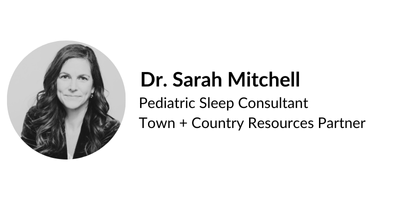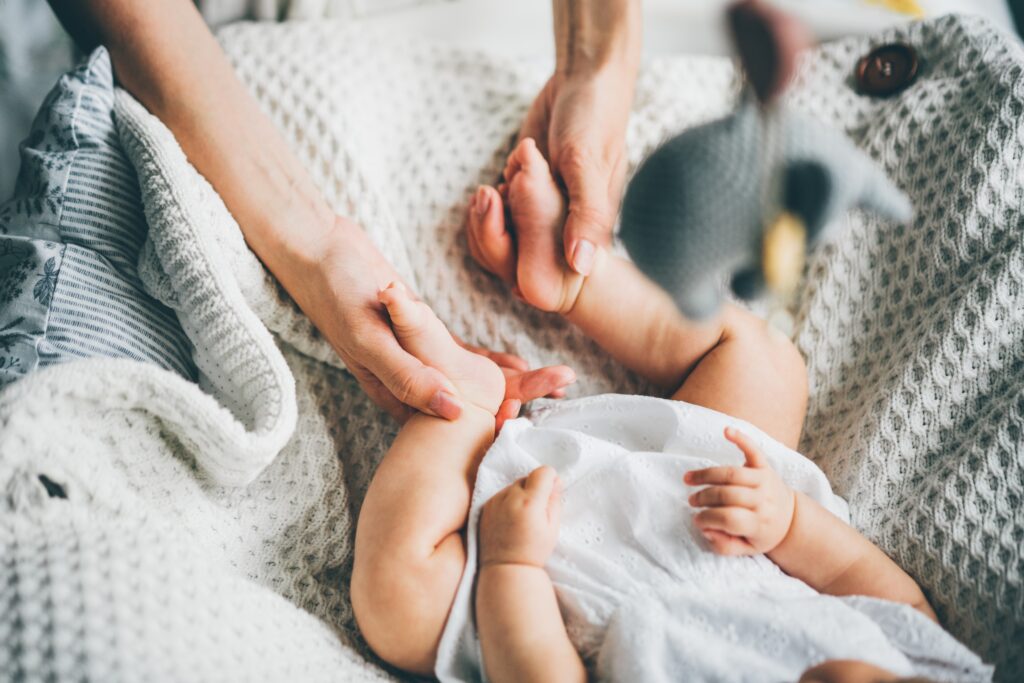At Town + Country Resources, we’re proud to partner with trusted experts like Dr. Sarah Mitchell of Helping Babies Babies Sleep, who brings years of experience as an infant sleep consultant. In this guide, she outlines the essential elements of a safe sleep environment for babies to help families and caregivers reduce the risk of Sudden Infant Death Syndrome (SIDS) and build healthy sleep routines from day one.
A baby’s sleep environment is more than just a place for rest; it’s a critical factor in their health and safety. Every parent’s top priority is their child’s well-being, and understanding how to create a safe sleep space is paramount. Alarming statistics surrounding Sudden Infant Death Syndrome (SIDS) underscore the vital role that proper sleep practices play in reducing risks. This guide will provide essential information and actionable steps to help you establish a secure and peaceful haven for your little one.
Why a Safe Sleep Environment Matters
Creating a safe sleep environment is not just a recommendation; it’s a necessity that directly impacts your baby’s health and your peace of mind. Unsafe sleep conditions can lead to severe risks, including Sudden Infant Death Syndrome (SIDS), accidental suffocation, and falls. Conversely, a thoughtfully prepared sleep setting significantly reduces these dangers, fostering a secure space for your baby to rest and allowing parents to sleep more soundly, knowing their child is safe.
Key Elements of a Safe Sleep Space
Establishing a safe sleep space involves several crucial components, each playing a vital role in protecting your infant.
A. The Crib or Bassinet
The foundation of a safe sleep environment begins with the right sleeping surface. Always choose a sturdy, safety-approved crib or bassinet that meets current safety standards. Ensure that crib slats are no more than 2 3/8 inches (6 cm) apart to prevent your baby’s head from becoming trapped. The mattress should be firm and fit snugly, without any gaps between the mattress and the crib sides, to prevent entrapment.
B. Sleeping Position
Always place your baby on their back to sleep, for every nap and every night. This “Back to Sleep” recommendation is a cornerstone of safe sleep practices and has significantly reduced SIDS rates which peaks between 1 and 4 months of age. Once a baby can roll both ways they can safely sleep on their stomach.
C. Bedding and Accessories
Simplicity is key when it comes to crib bedding. Use a firm mattress covered by a fitted sheet that is specifically designed for the crib. Avoid all soft bedding and accessories in the crib, including pillows, loose blankets, quilts, comforters, bumper pads, and stuffed animals. These items can pose a suffocation risk by obstructing your baby’s airway.
D. Room Temperature and Ventilation
Maintain a comfortable room temperature, typically between 68-72°F (20-22°C), to prevent overheating, which is a risk factor for SIDS. Dress your baby in lightweight sleepwear, such as a sleep sack or footed pajamas, and avoid over-bundling. The room should also be well-ventilated to ensure fresh air circulation.
E. Sharing a Room, Not a Bed
The American Academy of Pediatrics recommends room-sharing (where the baby sleeps in a separate crib or bassinet in the parents’ room) for the first six months. This practice can reduce the risk of SIDS by up to 50%. While room-sharing is encouraged, bed-sharing (sleeping in the same bed as your baby) is strongly discouraged due to the significant risks of suffocation, entrapment, and strangulation. However, parents should know that a study by Paul et al (2017) found that babies who sleep in their own rooms after 4 months of age tend to sleep better, with longer stretches of continuous sleep, compared to those who continue to room share. The study also indicated that room-sharing was associated with less nighttime sleep and potentially unsafe sleep practices as many parents often resorted to bed sharing.
Safe Sleep Practices for Parents
Beyond the physical setup of the sleep space, parents play a crucial role in implementing safe sleep practices. Avoid co-sleeping in adult beds, especially on couches or chairs, as these surfaces present a high risk of suffocation or overlay. Instead of loose blankets, opt for wearable blankets or sleep sacks to keep your baby warm and safe. Never place your baby to sleep on soft surfaces like sofas, recliners, or adult beds. Additionally, maintaining a smoke-free environment is vital; avoid smoking yourself and ensure no one smokes near your baby, as smoke exposure significantly increases the risk of SIDS.
Additional Tips for Safe Sleep
For added safety, consider offering a pacifier at nap time and bedtime once breastfeeding is well-established (typically around 3-4 weeks). Ensure that all caregivers, including babysitters and grandparents, are fully informed about and adhere to safe sleep practices. Regularly check crib safety standards and stay updated on any recall notices for baby products. Lastly, always place your baby on a firm, flat surface for sleep; avoid using inclined sleepers, car seats, or other non-flat surfaces for routine sleep.
Conclusion
Creating a safe sleep environment is one of the most impactful ways you can protect your baby and contribute to their healthy development. By consistently following these guidelines, you significantly reduce the risks of SIDS and other sleep-related incidents. Always consult with your pediatrician for personalized advice and to address any concerns you may have. By making small, intentional changes, you can create a secure and cozy sleep space for your little one, providing peace of mind for both you and your baby.
A Note from Town + Country Resources
If you’re seeking one-on-one guidance for newborn sleep, we highly recommend Dr. Sarah Mitchell of Helping Babies Sleep. As a pediatric sleep consultant and trusted partner of Town + Country Resources, Dr. Mitchell offers practical, evidence-based solutions to help your family thrive.
Visit Helping Babies Sleep to explore her services, book a consultation, or learn more about establishing healthy sleep for your infant or child.

Ready to Find the Right Support for Your Family?
Whether you’re due in a few weeks or planning ahead, Town + Country Resources is here to help you navigate this important transition. We’ll guide you through every step—so you can focus on what matters most: caring for your baby and yourself.
📞 Call us to speak with a Placement Counselor
📧 Email: info@tandcr.com
🌐 Learn more: www.tandcr.com

